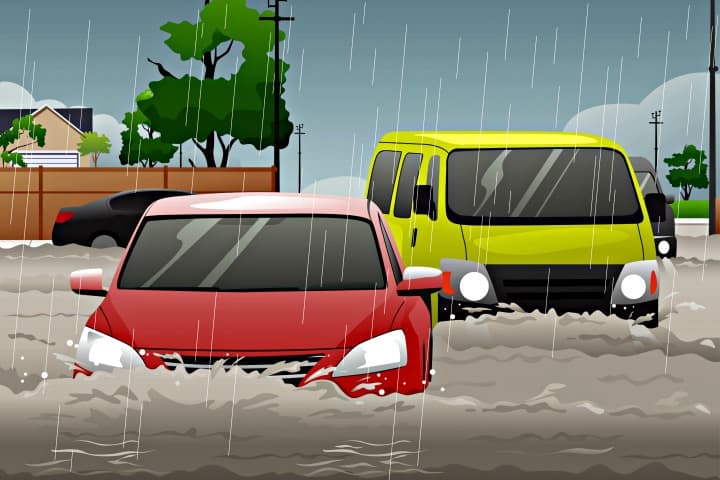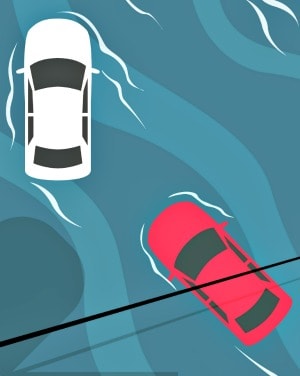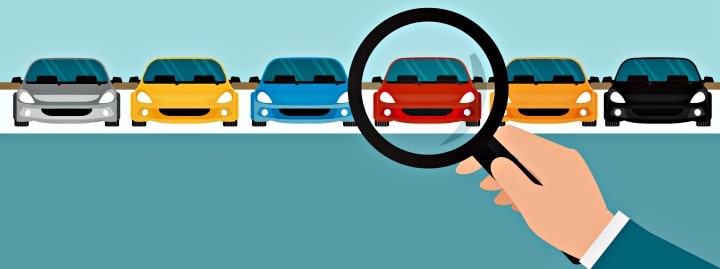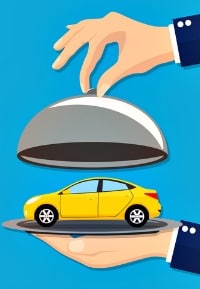Buyer Beware: Flood Damaged Vehicles Coming to a Used Car Lot Near You

By Autumn Giusti
Now that the flood waters from hurricanes Harvey and Irma have receded, the damaged vehicles in their paths could start flooding a used car market near you.
Vehicle experts are warning buyers to be vigilant, as unscrupulous sellers looking to profit from a disaster will try to unload these vehicles onto unknowing buyers.
The fact that these storms were so widespread provides scammers with more opportunities to commit fraud at someone else’s expense, says Frank Scafidi, spokesman for the National Insurance Crime Bureau, a nonprofit group that combats insurance fraud and crime.
RELATED: 5 Scams to Avoid After a Hurricane Hits
“If it’s a more massive event that produces more damage, that just increases the number of targets or potential vehicles that can be used to conduct that kind of fraud,” he says.
As of Sept. 15, the NICB tracked just more than 225,000 vehicle claims related to Harvey and 48,000 vehicle claims for Irma. That includes damages ranging from scratched paint to complete flood losses. Both numbers will increase, Scafidi says, although there is no way to know yet how many of these vehicles will ultimately be deemed flood-damaged or total losses.
These numbers could exceed the estimated 640,000 cars flooded in Hurricane Katrina because the sheer geographical size of the impacted areas from Harvey and Irma, and the population within, are much larger than what was experienced during the 2005 storm, Scafidi says.
“So the base number of potential flood vehicles is much higher.”
 Rampant disaster fraud first came to light after Katrina and was what motivated the industry to provide consumers better safeguards against fraud.
Rampant disaster fraud first came to light after Katrina and was what motivated the industry to provide consumers better safeguards against fraud.
A fraud task force set up after Katrina received and screened more than 26,000 fraud complaints and referred more than 17,000 of those to law enforcement for investigation, according to NICB.
CHECK OUT: Car Totaled? Here’s What to Ask
As a direct result of Katrina, NICB established its VINCheck system, a free service that allows car buyers to search a database of Vehicle Identification Numbers to see if a vehicle has ever been declared as “salvage” or a total loss by companies participating in the program.
These member companies account for 88 percent of the policies in effect today. However, instances of fraud can still slip through the cracks and be missed by title and VIN checks. Some fraudsters buy the cars at bargain prices, clean them up and then take them out of state, where the VIN number is switched and the car is retitled with no indication it has been damaged.
Hidden water damage lurks
Al Waller has seen firsthand the misery that flooded cars can bring to their owners. Waller is vice president of Fradella’s Collision Centers, which has three locations in the New Orleans area, and he has worked on water-damaged cars from Katrina and dozens of other storms.
Just recently, he discovered flood damage in a car that was in the process of undergoing collision repairs. It turns out that the car had been involved in a flood this past year in another part of the state. The buyer had no idea of any water damage when he purchased the car a few months later, and he is now suing the seller.
“It can be miserable for the consumer once these things start malfunctioning,” Waller says.
The issue with flooded vehicles is that they start having problems fairly quickly. And because fraudulent sellers are in the business of scamming people, they’re not about to provide a legitimate name or contact information.
“Sooner or later, you’re going to have issues,” Scafidi says. “And when you go find that seller, good luck.”
The mere act of buying or selling a flooded car isn’t illegal, as long as buyers know what they’re going into, Scafidi says. In fact, anyone who is willing to buy a flooded or salvaged car — and take up the task of repairing it — can pick up a pretty good deal at an auction.
“The one word that really controls all of this is disclosure,” Scafidi says. “If people on both ends of the transaction are aware that a vehicle has a history, and the seller discloses that history to the buyer, then everyone is good.”

What to look for when buying a used car
Water damage can be more difficult to spot than damages incurred in a collision.
“Flood damage doesn’t usually involve an impact with a solid object as an ordinary crash does, so there is no apparent damage to a vehicle from mere exposure to rising water levels,” Scafidi says.
Even legitimate auto dealers get fooled because many of them acquire inventory from “scouts” who can find good deals around the nation and then have the vehicle shipped to the dealer.
Knowing what to look for and which questions to ask when shopping for a vehicle can help buyers avoid falling victim to a flooded-car scam. Here are measures buyers can take:
Question the car seller
The seller’s behavior can also tip off a buyer that something isn’t right with the sale. Questioning the seller about the vehicle’s history can be telling. If the seller isn’t forthcoming about certain details or is trying to hurry the sale, that could be a red flag.
Do your own vehicle research
In addition to NICB’s VINCheck database, the National Motor Vehicle Title Information System also maintains a VIN database at www.vehiclehistory.gov. CarFax maintains its own flood-damage database and is offering free access following Harvey and Irma. The database is at www.carfax.com/flood.
Follow your nose
Check for a mildew smell, and pay attention if there’s an overpowering amount of deodorizer.
“One of the first things we notice with cars is the smell,” Waller says. “Generally, a car that hasn’t been repaired properly from a flood will have either a strong, musty odor, or it will have something that’s trying to mask that.”
Use your ears
Strange noises can be another warning sign of water damage to a vehicle.
Look for visible evidence
Physical evidence that a car has been damaged can be tricky to find, but experts say there are some telltale signs:
- Water stains, mildew, sand or silt can collect under the carpets, floor mats, headliner cloth and behind the dashboard.
- Mud or grit can accumulate in the spare tire compartment in the trunk, as well as in alternator crevices, behind wiring harnesses and around the small recesses of starter motors, power steering pumps and relays.

- Seatbelt retractors can collect moisture, mildew or grime.
- Door speakers often sustain damage due to flooding.
- Areas underneath the seats can conceal damage. The tracks and frames under the seats can show signs of corrosion if they were exposed to brackish or salty water. “And you’d be surprised how often you look under the seats and find deodorizers or some kind of absorbent. A lot of times used car guys will throw something under the seat to absorb odor and moisture,” Waller says.
- A water line can be visible inside the car’s fender well.
- If any dashboard warning lights, such as “check engine,” come on when the engine starts, that could indicate that the car’s electronics have been unplugged and then plugged back in, or that there are problems with the car’s connections. If the plugs get wet, they will corrode over time and start tripping electrical codes. “And with the amount of electronics we have in cars these days, it can be a ticking time bomb,” Waller says.
Bring in a car professional
Vehicle experts say the best way to pick out a flood-damaged car is to have a skilled technician take a look at it.
“It might be worth paying someone a few bucks who knows vehicles inside and out,” Scafidi says.
Trust your instincts
If a 2015 Chevy Tahoe valued at $38,000 shows up on Craigslist for $14,000, something might be amiss.
“That’s why the old saying, ‘It’s too good to be true’ is perfect for these kinds of scams — it isn’t,” Scafidi says.
